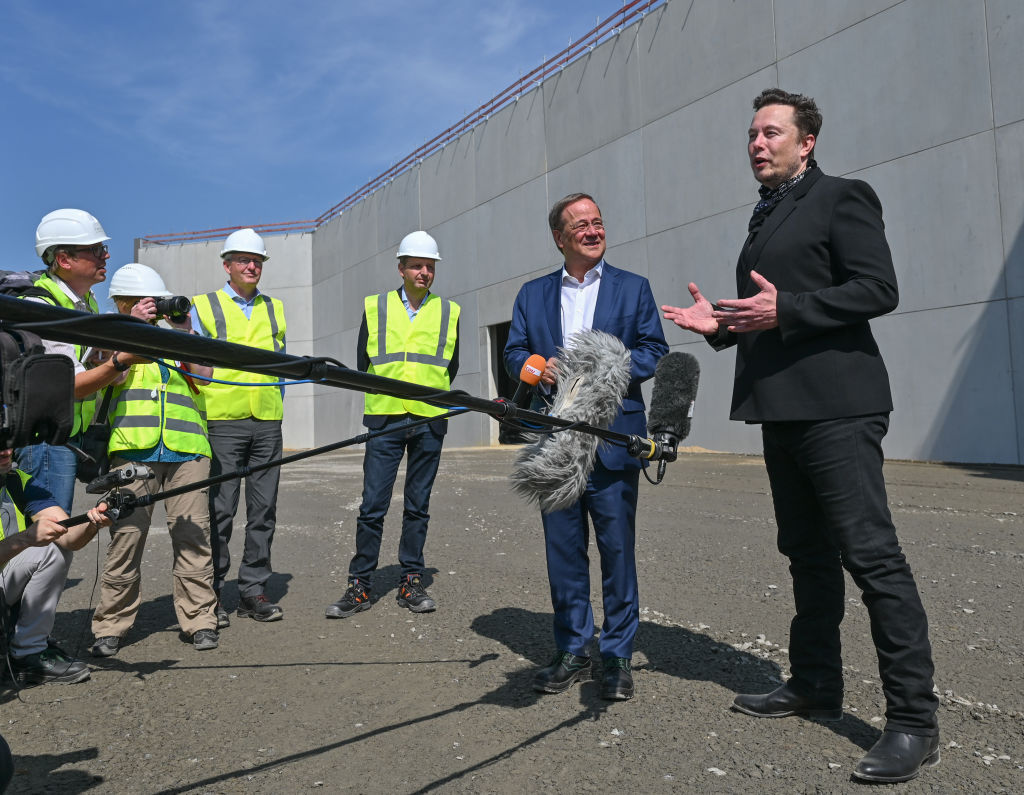In an interview with the Financial Times last week, Elon Musk uttered a line that seemed to harken back to an older conception of work—one before the pandemic brought discussions of burnout, overwork, boundaries, and employee mental health to the fore.
“There’s just a lot of super-talented hardworking people in China who strongly believe in manufacturing,” he said in response to a question about the electric-vehicle landscape. “They won’t just be burning the midnight oil, they will be burning the 3 a.m. oil. They won’t even leave the factory.”
To be sure, only the most cartoonishly villainous of mustache-twirling bosses would say they’re actively looking to drive their employees to burnout. But the norms and expectations that create a culture of burnout are often wrapped in a much more palatable coating: employee engagement. Musk’s comment perfectly encapsulates how insidiously one can become the other, conjuring up an image of workers so engaged, they won’t even leave the factory—not because of lack of choice, but because they believe so strongly in the manufacturing.
For the most part, engagement is held up in management research and discussions as an unqualified good. Studies have demonstrated that engaged employees are high performers and low turnover risks; engagement is so valued a metric that the Society for Human Resources Management has a toolkit for bolstering it.
But research suggests that in some cases, engagement and burnout can be two sides of the same coin. One 2019 study found that too-high levels of engagement can be a direct cause of burnout; another paper, published in 2017 in the journal Burnout Research, noted that “the indicators of burnout and those of engagement did not show a clearly different pattern” in the workers studied. Researchers from Yale’s Center for Emotional Intelligence found that roughly one-fifth of employees were both highly engaged and suffering from burnout, battling intense stress in roles they cared about deeply. (Notably, Musk’s companies Tesla and SpaceX, both of which have unusually high attrition rates, share the same combination of employee praise for their innovation and condemnation of their burnout-inducing culture.)
“That means that companies may be at risk of losing some of their most motivated and hard-working employees not for a lack of engagement,” the Yale researchers wrote in Harvard Business Review, “but because of their simultaneous experiences of high stress and burnout symptoms.”
The takeaway for managers: Engaging harder is not the same as engaging smarter.
So what does engagement without burnout look like?
As Gallup’s Jim Harter, chief scientist of workplace management and well-being at Gallup (which fields a survey each year measuring employee engagement) has previously explained to Charter, a sense of autonomy is key. ”But to have autonomy,” he added, “you also have to have that accountability, so that we know who the high performers are and why, and we can recognize them and reward them.”
Similarly, among the workers in the Yale study who enjoyed engagement without burnout, one commonality was what the researchers called “high resources”: They felt supported by their managers, equipped to succeed in their roles, and, crucially, recognized for their efforts. As the demands of a job went up, so did the need for more resources to compensate. No matter how much an employee may be engaged in their work, in other words, a job well done is rarely a sustainable reward in and of itself—and most will feel it soon after, if not long before, the 3 a.m. oil starts to burn.
